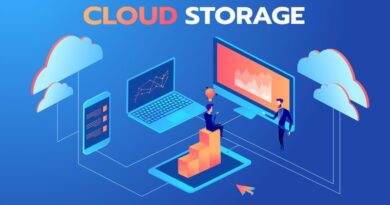Data Management in IoT: Importance and Challenges
Introduction:
In today’s interconnected world, the Internet of Things (IoT) has revolutionized the way we live and work. IoT devices generate massive amounts of data, making efficient data management crucial for maximizing their potential. In this article, we will explore the significance of data management in IoT and discuss the key components of an effective data management system.
- Understanding the Importance of Data Management in IoT
- Key Components of a Data Management System in IoT
- Benefits of Implementing an Efficient Data Management System in IoT
Understanding the Importance of Data Management in IoT
In the IoT ecosystem, countless devices, sensors, and machines constantly gather and transmit data. Without proper data management, this wealth of information becomes overwhelming and challenging to extract value from. Effective data management in IoT involves organizing, storing, analyzing, and securing the massive amounts of data generated by IoT devices.
This ensures data quality, reliability, and accessibility, enabling businesses and organizations to make informed decisions. It enables efficient monitoring, analysis, and forecasting, helping improve operational efficiency, enhance customer experiences, and drive innovation.
Key Components:
- Data Collection: The first step in managing IoT data is to collect it effectively. This involves leveraging sensors, devices, and networks to gather data from various sources. Robust data collection mechanisms ensure data accuracy and reliability.
- Data Storage: After collecting the data, it needs to be stored securely and efficiently. A data management system in IoT typically incorporates cloud-based storage solutions, enabling scalability, flexibility, and easy access to the data from anywhere, anytime.
- Data Integration: IoT data comes from diverse sources and formats. Data integration involves combining data from different devices, sensors, and systems into a unified format for analysis. This step enables organizations to gain a holistic view of their IoT data and extract meaningful insights.
- Data Analysis: Once the data is integrated, it needs to be analyzed to extract valuable insights. Data analysis techniques such as machine learning, artificial intelligence, and predictive analytics help identify patterns, trends, and anomalies, enabling organizations to make data-driven decisions.
- Data Security and Privacy: With the increasing volume of IoT data, ensuring data security and privacy is crucial. A robust data management system incorporates measures to protect data against unauthorized access, data breaches, and cyber threats. It also adheres to relevant data protection regulations and standards.
Benefits :
- Enhanced Operational Efficiency: This improves operational efficiency by providing real-time insights, optimizing processes, and enabling predictive maintenance. This results in reduced downtime, improved resource allocation, and better overall performance.
- Improved Decision-Making: An efficient data management system facilitates data-driven decision-making. By analyzing IoT data, organizations can gain valuable insights into customer behavior, market trends, and operational patterns, enabling them to make informed and timely decisions.
- Enhanced Customer Experiences: This enables organizations to personalize their products and services based on customer preferences and behavior. By understanding customer needs and expectations, businesses can deliver tailored experiences, resulting in increased customer satisfaction and loyalty.
- Innovation and Growth: IoT data holds immense potential for innovation and new business opportunities. By effectively managing and analyzing IoT data, organizations can identify new market trends, develop innovative products and services, and stay ahead of the competition.
Conclusion
In conclusion, data management in IoT plays a pivotal role in harnessing the power of connected devices and the vast amounts of data they generate. By implementing a comprehensive data management system, organizations can unlock the true potential of IoT, driving operational efficiency, informed decision-making, enhanced customer experiences, and fostering innovation for future growth.




